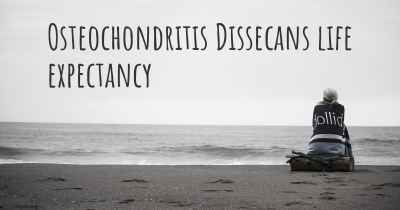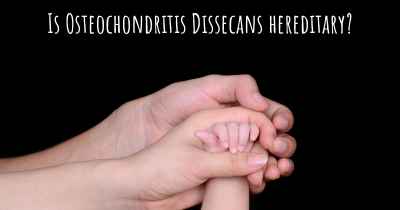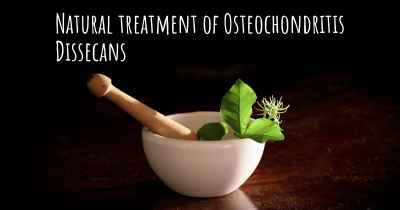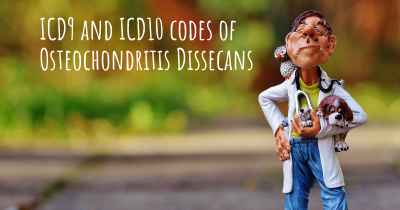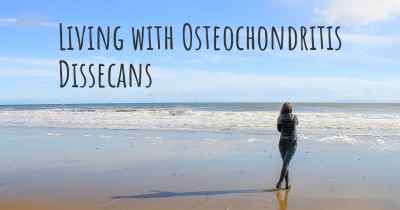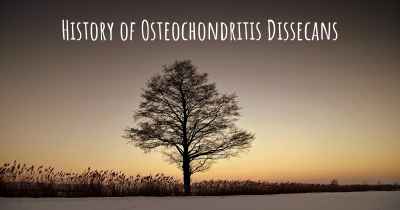Osteochondritis Dissecans diet. Is there a diet which improves the quality of life of people with Osteochondritis Dissecans?
Are you aware of a diet that can improve the quality of life of people with Osteochondritis Dissecans? Is there a diet that is suggested to avoid when having Osteochondritis Dissecans? See if there is a diet that can improve the quality of life of people with Osteochondritis Dissecans, recommended and to avoid food when having Osteochondritis Dissecans
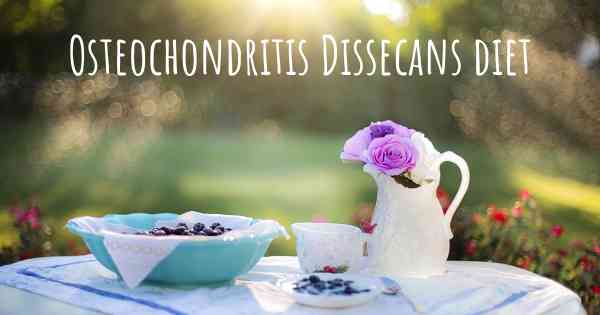
Osteochondritis Dissecans Diet: Improving Quality of Life
Osteochondritis Dissecans (OCD) is a condition that affects the joints, particularly the knee, ankle, and elbow. It occurs when a small piece of bone and cartilage separates from the joint surface, causing pain, swelling, and limited mobility. While there is no specific diet that can cure OCD, adopting a healthy and balanced eating plan can help improve the overall quality of life for individuals with this condition.
The Role of Nutrition in OCD
Nutrition plays a crucial role in managing OCD symptoms and promoting joint health. A well-rounded diet can help reduce inflammation, support tissue repair, and strengthen bones. Additionally, maintaining a healthy weight is important to alleviate stress on the affected joints.
Key Nutrients for OCD
1. Omega-3 Fatty Acids: Found in fatty fish (such as salmon and mackerel), walnuts, and flaxseeds, omega-3 fatty acids have anti-inflammatory properties that can help reduce joint pain and inflammation associated with OCD.
2. Antioxidants: Colorful fruits and vegetables, such as berries, spinach, and bell peppers, are rich in antioxidants. These compounds help protect the joints from oxidative stress and promote healing.
3. Vitamin C: Citrus fruits, strawberries, kiwi, and broccoli are excellent sources of vitamin C. This vitamin is essential for collagen synthesis, which is crucial for maintaining healthy cartilage and connective tissues.
4. Vitamin D: Sunlight exposure and fortified foods like milk, eggs, and fatty fish provide vitamin D. This nutrient aids in calcium absorption, promoting strong bones and reducing the risk of further joint damage.
5. Calcium: Dairy products, leafy greens, and fortified plant-based milk alternatives are rich in calcium. Adequate calcium intake is vital for maintaining bone density and preventing osteoporosis.
6. Magnesium: Nuts, seeds, legumes, and whole grains are good sources of magnesium. This mineral supports bone health and muscle function, helping to alleviate muscle spasms and cramps.
Foods to Avoid or Limit
While certain foods can support joint health, others may exacerbate inflammation and worsen OCD symptoms. It is advisable to limit or avoid the following:
1. Processed Foods: Highly processed foods, including fast food, sugary snacks, and processed meats, often contain unhealthy fats and additives that can increase inflammation.
2. Trans Fats: Trans fats, commonly found in fried foods, margarine, and commercially baked goods, promote inflammation and can contribute to joint pain.
3. Added Sugars: Excessive sugar consumption can trigger inflammation and lead to weight gain, which puts additional stress on the joints.
4. Alcohol: Alcohol can interfere with the body's ability to absorb essential nutrients and may worsen inflammation. It is best to consume alcohol in moderation or avoid it altogether.
Additional Lifestyle Considerations
Apart from a healthy diet, individuals with OCD can benefit from incorporating other lifestyle changes to improve their quality of life:
1. Regular Exercise: Low-impact exercises, such as swimming, cycling, and yoga, can help strengthen muscles, improve joint flexibility, and reduce pain.
2. Weight Management: Maintaining a healthy weight reduces the strain on the joints, minimizing pain and preventing further damage.
3. Stress Reduction: Stress can exacerbate pain and inflammation. Engaging in relaxation techniques, such as meditation, deep breathing exercises, or pursuing hobbies, can help manage stress levels.
4. Physical Therapy: Working with a physical therapist can provide targeted exercises and techniques to improve joint function and reduce pain.
Consult a Healthcare Professional
While a healthy diet and lifestyle modifications can be beneficial for individuals with OCD, it is essential to consult with a healthcare professional, such as a registered dietitian or orthopedic specialist. They can provide personalized advice, considering individual needs and any potential interactions with medications or other medical conditions.
